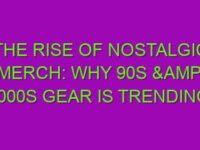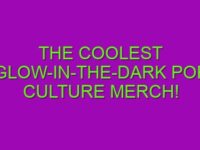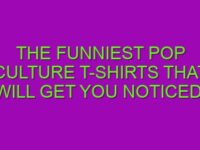-
Table of Contents
The Evolution of Superhero Merchandise: A Look at the Changing Trends
Superheroes have been a staple of popular culture for decades, captivating audiences with their extraordinary abilities and inspiring countless fans around the world. As these iconic characters have gained popularity, so too has the demand for superhero merchandise. From action figures to clothing, the world of superhero merch has undergone a remarkable transformation over the years.
In the early days of superheroes, merchandise was relatively limited. Comic books were the primary medium through which fans could engage with their favorite characters. However, as superheroes began to make their way onto the big screen and television, the demand for merchandise skyrocketed. Fans wanted to bring their favorite heroes into their everyday lives, and companies were quick to capitalize on this growing market.
The 1970s and 1980s marked a turning point in the world of superhero merch. Action figures became a popular item, allowing fans to recreate their favorite superhero battles in the comfort of their own homes. Companies like Kenner and Hasbro led the way, producing highly detailed figures that quickly became must-have items for collectors and fans alike. These action figures not only allowed fans to physically interact with their favorite characters but also served as a form of self-expression and a way to showcase their fandom.
As the 1990s rolled around, superhero merch continued to evolve. The rise of the internet and e-commerce opened up new avenues for fans to purchase their favorite superhero items. Online retailers like Amazon and eBay made it easier than ever to find and purchase rare and collectible items. This shift in the retail landscape also allowed smaller, independent companies to enter the market, offering unique and niche superhero merchandise that catered to specific fan interests.
In recent years, the world of superhero merch has exploded in popularity. With the Marvel Cinematic Universe dominating the box office and DC Comics characters finding success on both the big and small screens, superheroes have become a mainstream phenomenon. This increased visibility has led to a surge in merchandise options, with everything from clothing and accessories to home decor and kitchenware featuring superhero designs.
One notable trend in superhero merch is the emphasis on inclusivity and representation. As superhero stories have become more diverse, so too has the merchandise. Companies are now offering a wider range of products featuring characters of different genders, races, and backgrounds. This shift reflects the growing demand for representation in popular culture and allows fans from all walks of life to find merchandise that resonates with them.
Another significant change in superhero merch is the integration of technology. With the rise of smartphones and wearable devices, companies have found innovative ways to incorporate superheroes into everyday life. From superhero-themed phone cases to fitness trackers adorned with iconic logos, fans can now showcase their love for superheroes in ways that were unimaginable just a few decades ago.
In conclusion, the world of superhero merchandise has come a long way since its early days. From limited options to a vast array of products, the evolution of superhero merch reflects the changing trends and demands of fans. As superheroes continue to capture the hearts and imaginations of audiences worldwide, it’s safe to say that the world of superhero merch will continue to evolve and adapt to meet the ever-growing demand.
From Action Figures to Collectibles: The Transformation of Superhero Merchandise
Superhero merchandise has come a long way over the decades, evolving from simple action figures to highly sought-after collectibles. The transformation of superhero merch has been driven by advancements in technology, changes in consumer preferences, and the growing popularity of comic book characters in mainstream culture.
In the early days of superhero merchandising, action figures were the primary form of merchandise available. These figures were often made of plastic and featured limited articulation, allowing children to recreate their favorite superhero adventures. However, as technology advanced, so did the quality and detail of these action figures. Manufacturers began using more durable materials, such as vinyl and resin, and introduced more intricate designs, capturing the essence of the characters in greater detail.
As the popularity of superheroes grew, so did the demand for a wider range of merchandise. Comic book fans wanted to display their love for their favorite characters in various ways, leading to the introduction of t-shirts, posters, and other apparel featuring superhero logos and artwork. This expansion of merchandise options allowed fans to express their fandom in their everyday lives, turning superheroes into a fashion statement.
The rise of the internet and e-commerce further revolutionized the superhero merch industry. Online platforms provided a global marketplace for collectors and fans to buy, sell, and trade their favorite superhero items. This accessibility allowed collectors to find rare and limited-edition pieces that were previously difficult to obtain. Additionally, online communities and forums provided a space for fans to connect and share their passion for superheroes, further fueling the demand for merchandise.
One significant shift in superhero merchandising has been the transition from toys to collectibles. While action figures are still popular among children, a growing number of adults are now collecting superhero merchandise as a hobby. Collectibles, such as statues, busts, and replicas, have become highly sought-after items due to their limited availability and high-quality craftsmanship. These pieces often feature intricate details and are made from premium materials, making them valuable additions to any collector’s display.
The transformation of superhero merch has also been influenced by changes in consumer preferences. With the rise of streaming services and the popularity of superhero movies, fans now have a greater connection to the characters they love. This has led to an increased demand for merchandise that reflects the latest iterations of superheroes seen on the big screen. Manufacturers have responded by producing merchandise that closely resembles the costumes and designs featured in movies, allowing fans to feel a deeper connection to their favorite characters.
In conclusion, superhero merchandise has undergone a significant transformation over the decades. From simple action figures to highly sought-after collectibles, the evolution of superhero merch has been driven by advancements in technology, changes in consumer preferences, and the growing popularity of superheroes in mainstream culture. As the industry continues to evolve, it is clear that superhero merch will remain a staple in the lives of fans and collectors alike.
Superhero Merchandise: How Pop Culture and Consumer Demand Have Shaped the Industry
Superhero merchandise has come a long way over the decades, evolving alongside the ever-changing landscape of pop culture and consumer demand. From comic books to action figures, clothing to collectibles, the industry has experienced significant shifts in both the types of products available and the way they are marketed to fans.
In the early days of superheroes, merchandise was limited to comic books and newspaper strips. Fans could immerse themselves in the adventures of their favorite characters through the pages of these publications, but there were few tangible items available for purchase. However, as the popularity of superheroes grew, so did the demand for merchandise.
The 1960s marked a turning point for superhero merchandise, with the introduction of action figures. Companies like Hasbro and Mego began producing figures based on popular characters like Superman and Batman, allowing fans to bring their favorite heroes to life. These action figures quickly became a staple of the industry, and their popularity continues to this day.
As the 1970s and 1980s rolled around, superhero merchandise expanded beyond action figures. Clothing, such as t-shirts and pajamas, featuring superhero logos and designs became increasingly popular. Fans could proudly display their love for their favorite heroes through their fashion choices. Additionally, the rise of video games led to the creation of superhero-themed games and consoles, further fueling the demand for merchandise.
The 1990s saw a boom in superhero merchandise, driven in part by the success of blockbuster films like Tim Burton’s “Batman” and Richard Donner’s “Superman.” These movies not only brought superheroes to the big screen but also sparked a renewed interest in their merchandise. Suddenly, superhero-themed lunch boxes, backpacks, and even bed sheets were flying off the shelves.
The turn of the millennium brought with it a new era of superhero merchandise. With the rise of the internet and e-commerce, fans could now easily access a wide range of products from the comfort of their own homes. Online retailers like Amazon and eBay became go-to destinations for collectors seeking rare and exclusive items. This shift in the way merchandise was bought and sold opened up new opportunities for both fans and manufacturers.
In recent years, the superhero merchandise industry has experienced unprecedented growth. The success of the Marvel Cinematic Universe and DC Extended Universe has propelled superheroes into the mainstream, resulting in a surge of demand for related products. From high-end collectibles to limited-edition clothing collaborations, there is now a superhero-themed item for every fan.
Furthermore, the industry has become more inclusive, with merchandise featuring a diverse range of characters. This shift reflects the growing recognition of the importance of representation and the desire for fans to see themselves reflected in the products they purchase.
In conclusion, superhero merchandise has undergone significant changes over the decades, driven by the evolving landscape of pop culture and consumer demand. From the early days of comic books to the explosion of action figures and the rise of online shopping, the industry has adapted to meet the needs and desires of fans. As superheroes continue to dominate popular culture, it is safe to say that the world of superhero merchandise will continue to evolve and thrive.




















0 Comments